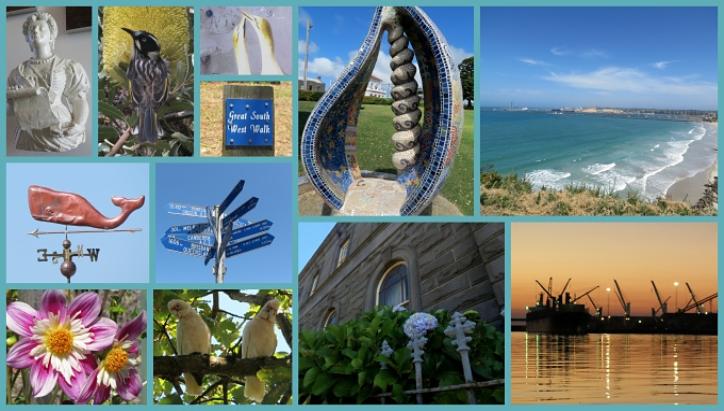| s/y Nine of Cups Portland, Victoria and the Discovery Coast February 2013 |
| Portland Harbour - 38S20.79 / 141E36.68 |
| Arriving in Portland, Victoria, we were out of the Roaring 40's, out of the Bass Strait and out of Tasmania and back in mainland Australia again. Portand Harbour is situated behind a large, protective breakwater and turning the corner heading towards the yacht club was a pleasant respite from the rolling seas on the other side. Several ships were loading and unloading at the wharf. Huge piles of wood chips and stacks of timber lined the dock and the air smelled of fresh-cut wood. A new marina was being built, but not yet completed and we anchored nearby. |
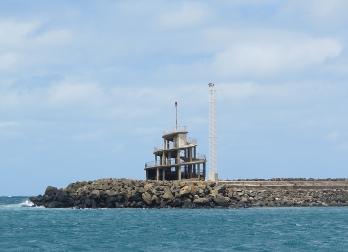
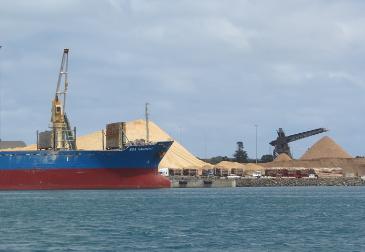

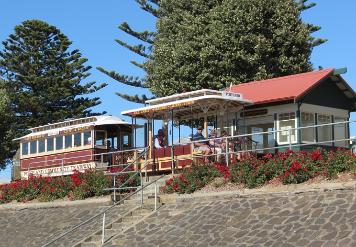
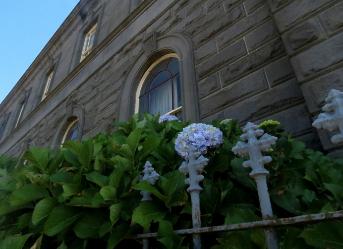
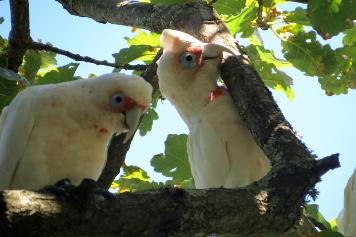
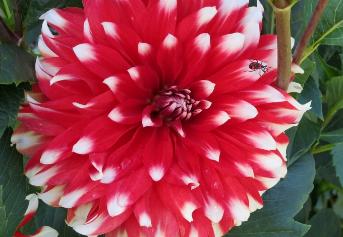
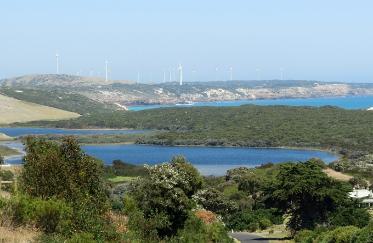
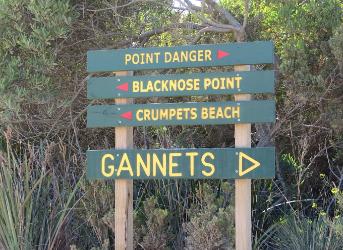
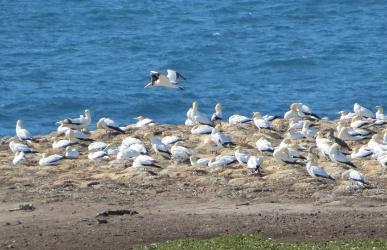
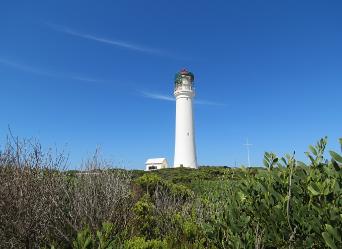
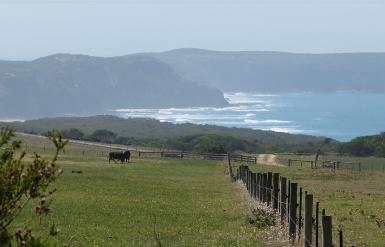
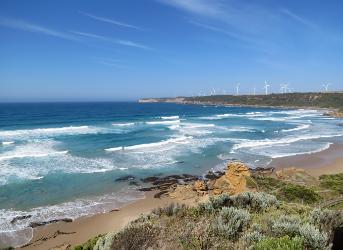
| The city of Portland is the oldest European settlement in the state of Victoria. It’s a pleasant little city, easily accessible on foot. Originally founded by Edward Henty in 1834 (though the Aborigines were here millennia before), there are historical buildings along every one of Portland’s main streets … 200 or more in town that date from the 19th century. Most are constructed of dark bluestone with which we were unfamiliar … a marked contrast to the golden sandstone we’d seen in Tasmania. Victorian bluestone is a basalt, quarried locally and one of the most common building materials of the 1850s during the Victorian Gold Rush. We took an historic walk through town, admiring these sturdy, built-to-last buildings. Most are still in use. The English Gothic style St. Stephens Anglican church (far right) and the old Town Hall (center) were particularly impressive. |
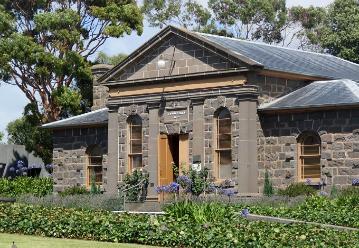
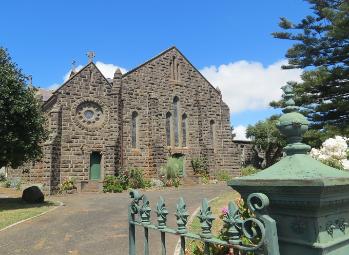
| After a couple of days of sailing, it was good to stretch our legs. We took a long, self-guided walk along the Norfolk pine-lined foreshore to the Portland Botanical Garden. The garden is renowned for its manicured croquet lawns and its dahlias. Though it was a bit early in the season (March-April is prime), we still saw some dazzling dahlias. Crazy-looking corellas filled the trees. We watched the Portland Croquet Club play a few wickets while enjoying our picnic lunch. |
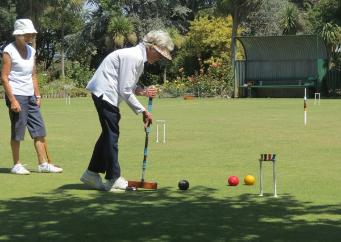
| The weather forecast indicated we'd be in Portland for a few days, so we decided to rent a car and drive along Portland's Discovery Coast. First stop was at a gannet colony. We reached the mainland colony via gravel roads near the Alcoa Aluminium smelting plant and we saw great piles of aluminium ingots waiting for transport. The Point Danger gannet colony is the only mainland breeding colony in Australia. |
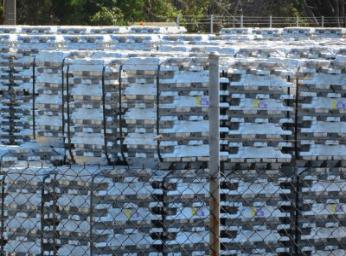
| We headed to Cape Nelson, a very scenic route along the high cliffed coast. The views were stupendous with miles of white sandy beach at the seaside and verdant rolling hills inland. |
| We walked through the Petrified Forest which was not a “petrified forest” at all, but rather natural erosion of stone that looked more like a moonscape. We drove a loop back to Portland and stopped at the Tarragal Limestone Caves as we passed through the beautiful Bridgewater Lakes (center) with a huge wind farm in the distance. We stopped at Fauna Park, a tiny little place just outside Portland, to watch the white kangaroos. And we thought they were only at Bruny Island. Live and learn. |
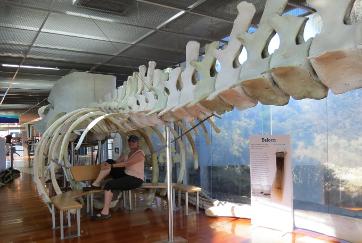
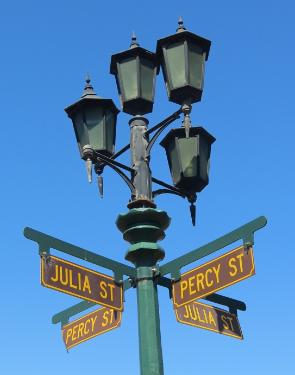
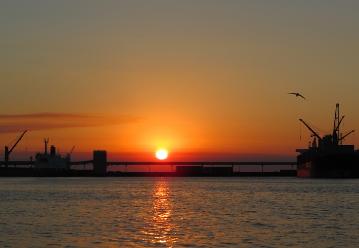
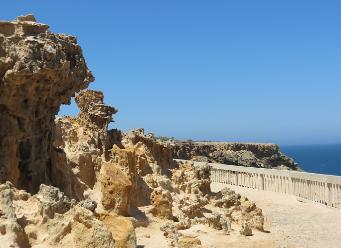
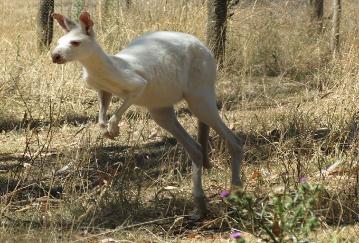
| Back in Portland, there was still lots to see and do on foot. We walked to Whaler’s Bluff Lighthouse. Built in 1859, this classic lighthouse structure was originally built elsewhere and transported to this spot later stone by stone. We could see Cups far below bobbing in the calm waters of Portland Harbour. Sunsets were pretty spectacular. |
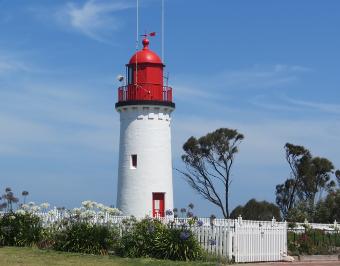
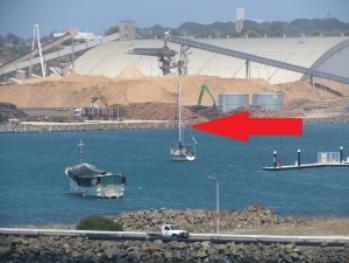
| We finished our time in Portland just wandering around and taking in the local sights. Then a weather window appeared and it was time to move on. Marcie received word that her Mom was seriously ill. We sailed directly to North Haven/Port Adelaide, South Australia. Marcie was heading back to the States. Come on along to South Australia with us. |
